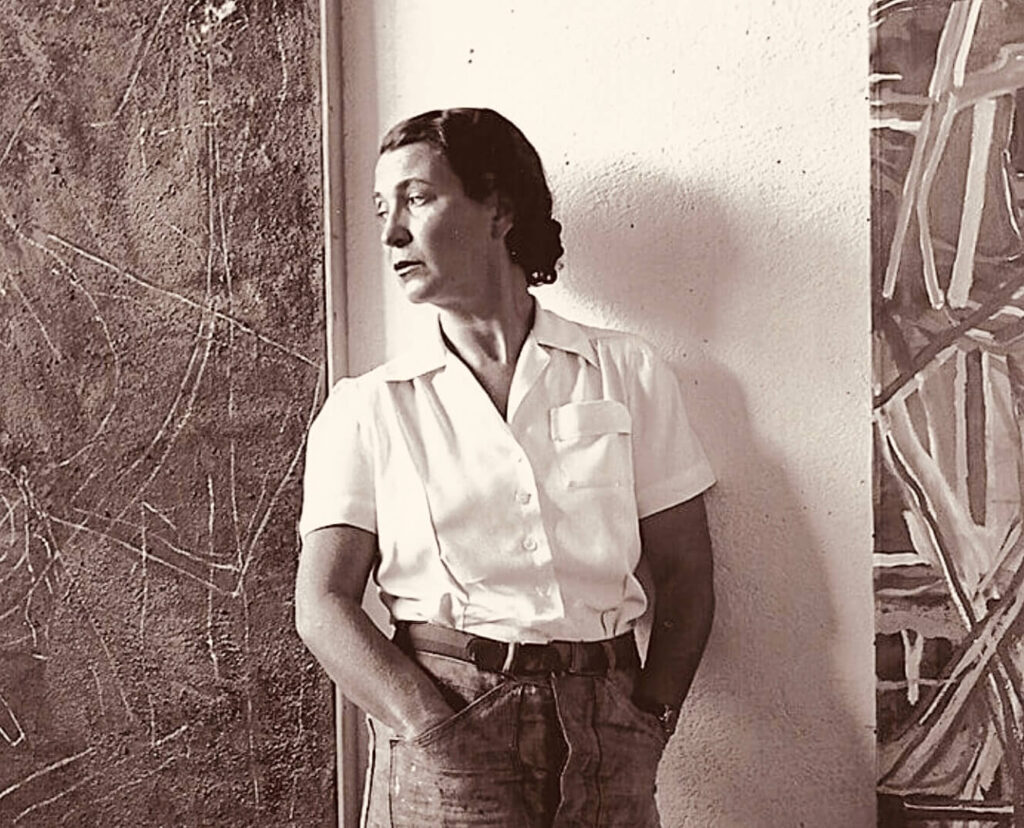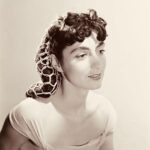Perle Fine
Perle Fine (1905-1988) was an American abstract expressionist painter whose innovative techniques and emotive use of color contributed significantly to the development of modern art. As one of the few women associated with the New York School, Fine’s work stands out for its distinct blend of abstraction and sensitivity to form and color. This biography explores Fine’s life, career, and three of her most significant artworks, highlighting her influence on the art world.

Early Life and Education
Perle Fine was born on Pelsie Feldman on April 9, 1905, in Boston, Massachusetts, to Russian-Jewish immigrant parents. From a young age, Fine showed a keen interest in art, often drawing and painting. Despite facing societal expectations and economic challenges, she pursued her passion for art with determination and resilience.
Fine began her formal art education at the School of Practical Art in Boston and later attended the Art Students League of New York. It was at the Art Students League that she studied under the influential teacher and artist Hans Hofmann. Hofmann’s emphasis on the push and pull of color and form deeply influenced Fine’s artistic development, inspiring her to explore abstraction and experiment with new techniques.
Early Career and Artistic Development
In the 1930s and 1940s, Fine immersed herself in the burgeoning New York art scene. She became associated with the American Abstract Artists group and exhibited her work alongside other avant-garde artists. Her early works were characterized by their geometric abstraction and a meticulous attention to form and composition.
Fine’s participation in the American Abstract Artists group was pivotal in shaping her career. The group provided a supportive community of like-minded artists dedicated to advancing abstract art in America. Through this association, Fine developed lasting friendships with notable artists such as Willem de Kooning, Lee Krasner, and Jackson Pollock.
Transition to Abstract Expressionism
The 1950s marked a significant transition in Fine’s work as she embraced the principles of abstract expressionism. Influenced by the dynamic and spontaneous techniques of her contemporaries, Fine began to experiment with gestural brushstrokes and a more emotive use of color. Her paintings from this period reflect a deep engagement with the physicality of paint and the expressive potential of abstraction.
Fine’s commitment to abstract expressionism was further solidified by her involvement with the “Ninth Street Show” in 1951, a landmark exhibition that showcased the works of leading abstract expressionists. Her participation in this exhibition alongside artists such as de Kooning, Pollock, and Krasner highlighted her importance within the movement and helped to establish her reputation as a significant figure in modern art.
Important Artworks
Three of Fine’s most significant artworks are “Composition (Still Life)” (1946), “Cool Series No. 27” (1961), and “Summer Idyll” (1968), which exemplify her mastery of abstraction, color, and composition.
“Composition (Still Life)” (1946)
“Composition (Still Life)” is an early work by Fine that demonstrates her transition from geometric abstraction to a more expressive style. The painting features a complex arrangement of shapes and forms, rendered in a muted palette of earth tones. The interplay of geometric elements and organic forms creates a dynamic composition that suggests both structure and fluidity.
The title “Composition (Still Life)” reflects Fine’s interest in exploring the boundaries between abstraction and representation. While the painting does not depict a traditional still life, its arrangement of shapes and forms evokes the sense of an abstracted interior scene. This work exemplifies Fine’s ability to balance formal structure with expressive brushwork, creating a composition that is both rigorous and emotive.
“Cool Series No. 27” (1961)
“Cool Series No. 27” is part of a series of paintings that Fine created in the early 1960s, characterized by their cool color palette and refined compositions. The painting features a harmonious arrangement of shapes and lines in shades of blue, green, and white. The interplay of color and form creates a sense of calm and serenity, reflecting Fine’s interest in the meditative qualities of abstraction.
The “Cool Series” represents a significant period in Fine’s career, during which she explored the potential of color and form to evoke emotional responses. “Cool Series No. 27” exemplifies her mastery of subtlety and nuance, demonstrating her ability to create compositions that are both visually engaging and emotionally resonant.
“Summer Idyll” (1968)
“Summer Idyll” is a later work by Fine that reflects her continued exploration of color and abstraction. The painting features a vibrant composition of overlapping shapes and forms in shades of yellow, orange, and green. The dynamic interplay of color and form creates a sense of movement and energy, evoking the warmth and vitality of a summer landscape.
The title “Summer Idyll” suggests a connection to the natural world, reflecting Fine’s interest in capturing the essence of a particular season or place. The painting’s vibrant colors and dynamic composition convey a sense of joy and exuberance, highlighting Fine’s ability to create works that are both visually striking and emotionally uplifting.
Legacy and Influence
Perle Fine’s legacy as an artist lies in her ability to create a unique visual language that bridges the gap between abstraction and representation. Her innovative use of color, form, and composition has left a lasting impact on modern art, influencing generations of artists and viewers.
Despite facing challenges as a woman in a predominantly male art world, Fine remained committed to her artistic vision and continued to create groundbreaking works throughout her career. Her contributions to abstract expressionism and color field painting have been recognized and celebrated through numerous exhibitions and retrospectives.
Fine’s works are included in the collections of major museums and galleries around the world, including the Metropolitan Museum of Art, the Whitney Museum of American Art, and the Solomon R. Guggenheim Museum in New York. Her influence extends beyond her own paintings, as she also played a crucial role in advocating for the recognition and inclusion of women artists within the art world.
Personal Life and Philosophy
Fine’s personal life was marked by her dedication to her art and her relationships with fellow artists. She was married to the photographer and graphic designer Maurice Berezov, who supported her career and provided a stable foundation for her creative endeavors. Together, they shared a mutual appreciation for the arts and a commitment to fostering a supportive artistic community.
Fine viewed her paintings as a form of exploration and discovery, a way to engage with the world and express her inner vision. She believed in the power of abstraction to convey emotional and intellectual experiences, and her work often reflects a deep sense of wonder and curiosity about the world around her.
Conclusion
Perle Fine’s artistic journey is a testament to her creativity, resilience, and profound understanding of color and form. Through her innovative use of abstraction and her dynamic compositions, she created a body of work that continues to inspire and challenge viewers. “Composition (Still Life),” “Cool Series No. 27,” and “Summer Idyll” are just a few examples of her ability to convey complex ideas and emotions through abstract forms and vibrant colors. Fine’s legacy as a pioneer of abstract expressionism and a master of color ensures that her work will continue to resonate with audiences for years to come.



